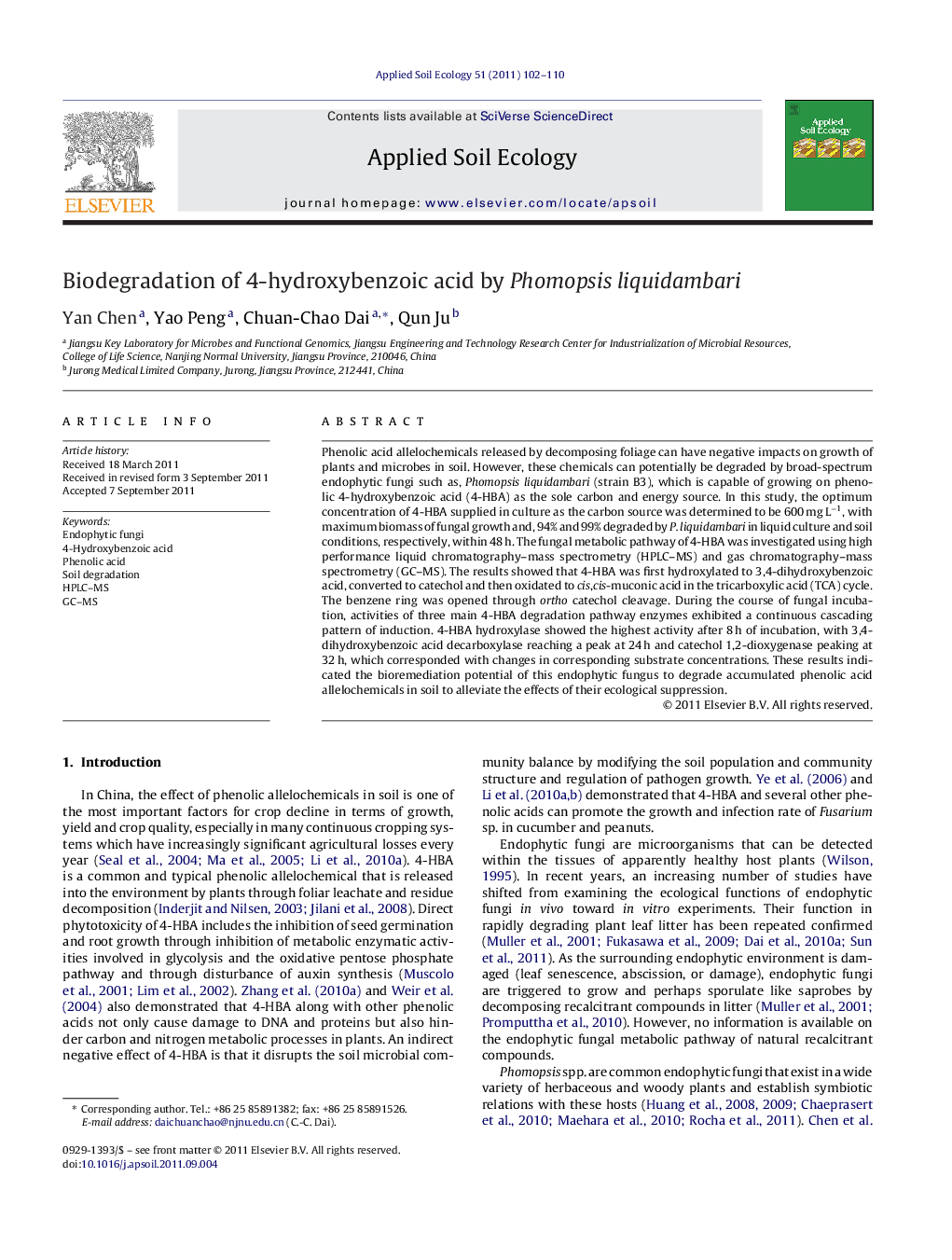| Article ID | Journal | Published Year | Pages | File Type |
|---|---|---|---|---|
| 4382680 | Applied Soil Ecology | 2011 | 9 Pages |
Phenolic acid allelochemicals released by decomposing foliage can have negative impacts on growth of plants and microbes in soil. However, these chemicals can potentially be degraded by broad-spectrum endophytic fungi such as, Phomopsis liquidambari (strain B3), which is capable of growing on phenolic 4-hydroxybenzoic acid (4-HBA) as the sole carbon and energy source. In this study, the optimum concentration of 4-HBA supplied in culture as the carbon source was determined to be 600 mg L−1, with maximum biomass of fungal growth and, 94% and 99% degraded by P. liquidambari in liquid culture and soil conditions, respectively, within 48 h. The fungal metabolic pathway of 4-HBA was investigated using high performance liquid chromatography–mass spectrometry (HPLC–MS) and gas chromatography–mass spectrometry (GC–MS). The results showed that 4-HBA was first hydroxylated to 3,4-dihydroxybenzoic acid, converted to catechol and then oxidated to cis,cis-muconic acid in the tricarboxylic acid (TCA) cycle. The benzene ring was opened through ortho catechol cleavage. During the course of fungal incubation, activities of three main 4-HBA degradation pathway enzymes exhibited a continuous cascading pattern of induction. 4-HBA hydroxylase showed the highest activity after 8 h of incubation, with 3,4-dihydroxybenzoic acid decarboxylase reaching a peak at 24 h and catechol 1,2-dioxygenase peaking at 32 h, which corresponded with changes in corresponding substrate concentrations. These results indicated the bioremediation potential of this endophytic fungus to degrade accumulated phenolic acid allelochemicals in soil to alleviate the effects of their ecological suppression.
► 91.3–98.7% degradation of soil phenolic allelochemicals 4-HBA within 48 h by endophytic fungi. ► Metabolic pathway of phenolic 4-HBA by endophytic fungi. ► Benzene ring was opened through ortho catechol cleavage. ► Catabolic enzymatic activities exhibit continuous cascade inducing tendency.
